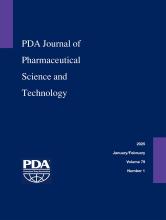Abstract
For several years, automated colony counting systems have been available with varying degrees of automation. Ever more sophisticated instruments are now increasingly used in microbiological laboratories of pharmaceutical Quality Control. In addition to the colony counting device, the instruments are now also equipped with robotic systems performing the entire handling of the Petri dishes, e.g. automated internal transportation of Petri dishes from the incubator chamber to the instrument′s enumeration device and back. Moreover, the subjective evaluation of microbial enumeration tests by analysts is replaced with a more accurate and precise process. This leads to significant improvements to data integrity compliance. Automated colony counting systems also often enable cost reduction in the microbiological laboratory, e.g. by not requiring a contemporaneous verification by a second analyst. They also enable direct integration of count data into an existing Laboratory Information Management System (LIMS), reducing the hands-on time, costs per test and also preventing human errors caused by manual transcription. Altogether, these instruments will lead to improved monitoring and assurance of control of biopharmaceutical processes and manufacturing environments, as well as shortened cycle times in the supply chain. Regulators are encouraging the biopharmaceutical industry to adopt these innovative systems. For example, this year a BioPhorum member company received the first health authority approvals from EU, US, CH, Canada, Australia and China for the use of automated colony counting systems for in-process bioburden testing and the release of drug substance lots, with an incubation time reduced by about 50%. Although these approvals are for release testing of drug substance lots, the instruments can also be used for environmental monitoring, testing of water samples, etc. This paper describes a systematic 9-step approach to the evaluation, equipment qualification, and deployment of automated colony counting systems which can be applied by biopharmaceutical companies wanting to take advantage of their numerous benefits.
- Alternative and Rapid Microbiological Method
- Automated Colony Counting
- Data Integrity Improvement
- Environmental Monitoring Bioburden Testing
- Equipment Qualification
- Microbiological Method Validation
- Received April 20, 2021.
- Accepted March 3, 2022.
- Copyright © 2022, Parenteral Drug Association
PDA members receive access to all articles published in the current year and previous volume year. Institutional subscribers received access to all content. Log in below to receive access to this article if you are either of these.
If you are neither or you are a PDA member trying to access an article outside of your membership license, then you must purchase access to this article (below). If you do not have a username or password for JPST, you will be required to create an account prior to purchasing.
Full issue PDFs are for PDA members only.
Note to pda.org users
The PDA and PDA bookstore websites (www.pda.org and www.pda.org/bookstore) are separate websites from the PDA JPST website. When you first join PDA, your initial UserID and Password are sent to HighWirePress to create your PDA JPST account. Subsequent UserrID and Password changes required at the PDA websites will not pass on to PDA JPST and vice versa. If you forget your PDA JPST UserID and/or Password, you can request help to retrieve UserID and reset Password below.






